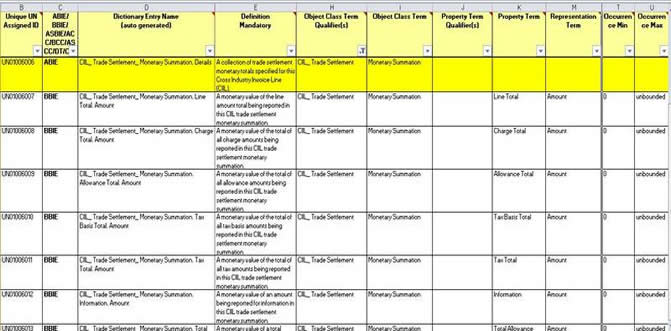Semantic Harmonisation Standards
Usually when semantics are mentioned in relation to business messages, it refers to the metadata that describes the data to be contained in each document. Semantics is therefore an important part of harmonization because it allows the document designers/modellers to focus on the meaning of the data, its context, and how it relates to other documents within the supply chain. Once approved, this metadata must be transformed to a syntax before implementation, which will contain the actual data. Having semantics and syntax separated allows data modellers to focus on each stage separately and to ensure the basics are right before providing the information to systems implementers. Typically Business Process Analysis (BPA) works at the semantic level and is not overly concerned with how the details are implemented.
Semantic models are used to define data in terms of real-world meaning and scenarios. UN/CEFACT and UNECE have, for several years, realised the benefit of semantic models, particularly as part of data harmonization initiatives. Two of these are UN/TDED and UN/CEFACT CCL. TDED was developed first and still, to this day, provides the basis for many of the terms used in Supply Chain Messages. Therefore CCL often refer to TDED elements and brings this to another level, since it not only incorporates Supply Chain Terms but also the relationships between terms as well as their context within the chain. CCL is transformed dynamically to a syntax format using a Naming and Design Rule (NDR), which effectively transforms the data model into an XML Schema. This, in turn, contains the rules for validating that the xml data complies with the semantic data model.

The image above shows an extract from UN/CEFACT Core Component Library which is a semantic data model.
